Let’s face it, anywhere you put mulch, you can dig a hole and plant ground cover. Indeed, ground cover plants are simply living mulches that don’t cost time or money to install every spring. Just like mulch, they help retain soil moisture, and they keep weeds from crowding in. Ground cover also provides an extra layer of color and, often, beautiful flowers.
I’m not sure when mulch—black, orange, brown, red and every other color of the rainbow—became a desirable part of the garden. Personally, I’d rather have plants – living mulch groundcover.
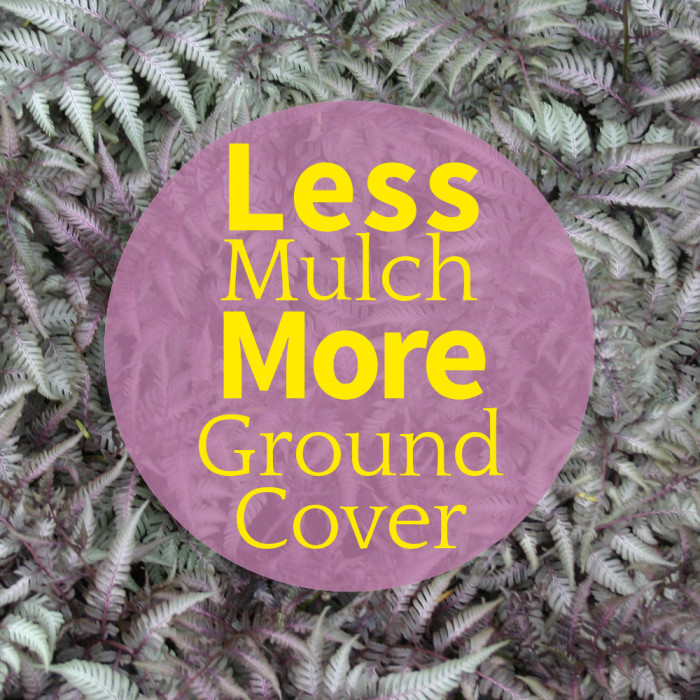
Go beyond your basic groundcovers – There are some exciting plants to enjoy!
Japanese pachysandra, myrtle (Vinca minor), and English ivy (Hedera helix) are far from the only ground covers out there. In the sun to part-shade, try planting some fast-spreading flowering perennials like Geranium macrorrhizum, Lamium maculatum, or Ceratostigma plumbaginoides. Woodland gardens are perfect settings for drifts of ferns, flowing grasses, and sedges like Luzula, Carex, and varieties of Hakonechloa.
Trailing evergreen woody plants, such as Mitchella repens and Euonymous fortunei ‘Wolong Ghost’ are also good choices.
Large areas will quickly fill in with the blooms and knockout fall color of deciduous flowering shrubs like Itea ‘Little Henry’ and Rhus aromatica ‘Grow-Lo’ or stands of berrying bushes like Vaccinium angustifolium.
Even better, plant a patchwork by mixing large drifts of different ground covers to blend into each other at the edges –a strategy that is both beautiful and easy.
Use this list as a source of inspiration for new ground cover plants to use when filling in all the areas where you once had too much mulch.
PITH + VIGOR’s Favorite Mulching Plants
We have separated our list into low-growing and medium-height plants. The low groundcovers will stay under 1′ tall – and many will be true ground huggers – maxing out at only a few inches. The taller varieties (we have called them medium) are over 1′ tall but still are typically quite low growing by comparison to other plants you might consider pairing them with.
Low Perennials that only grow up to 1′ foot tall
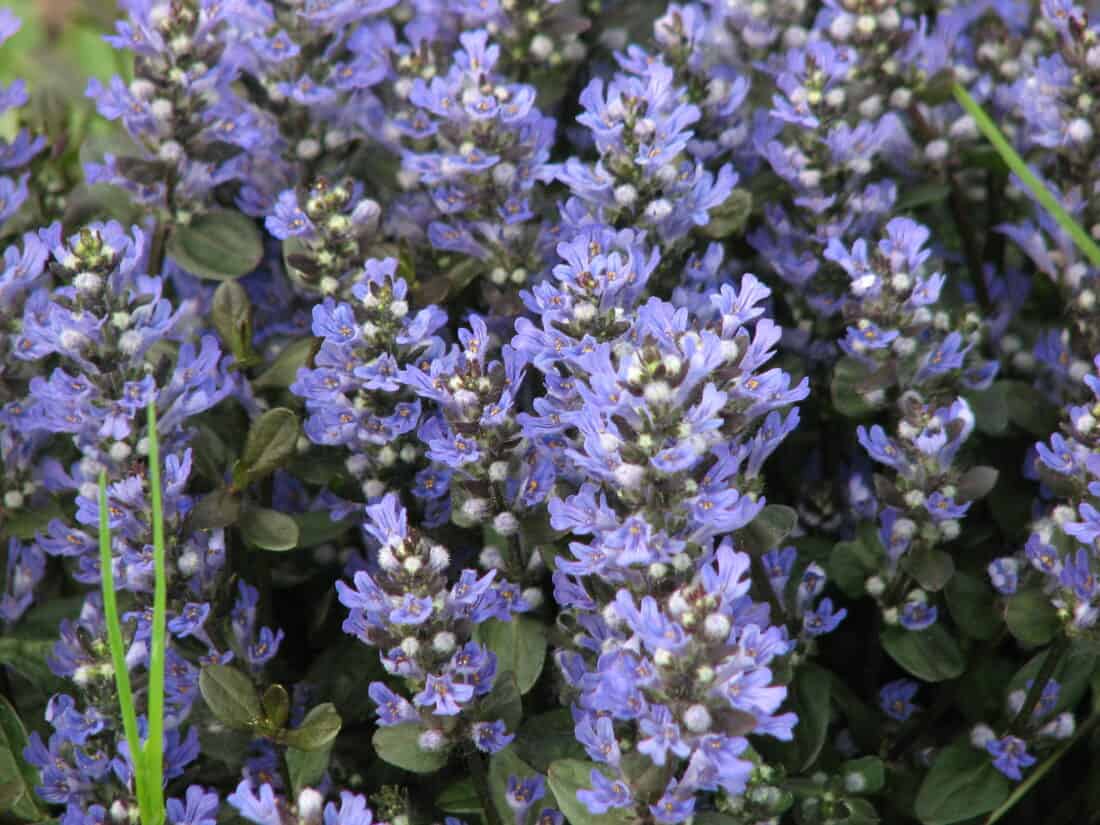
Ajuga reptans ‘Chocolate Chip’ -Part sun/ Part Shade – A dense, low blanket of purple-brown foliage, erupting in small blue wands in spring. Try it along a semi-shaded path or under a pink-flowered weigela.
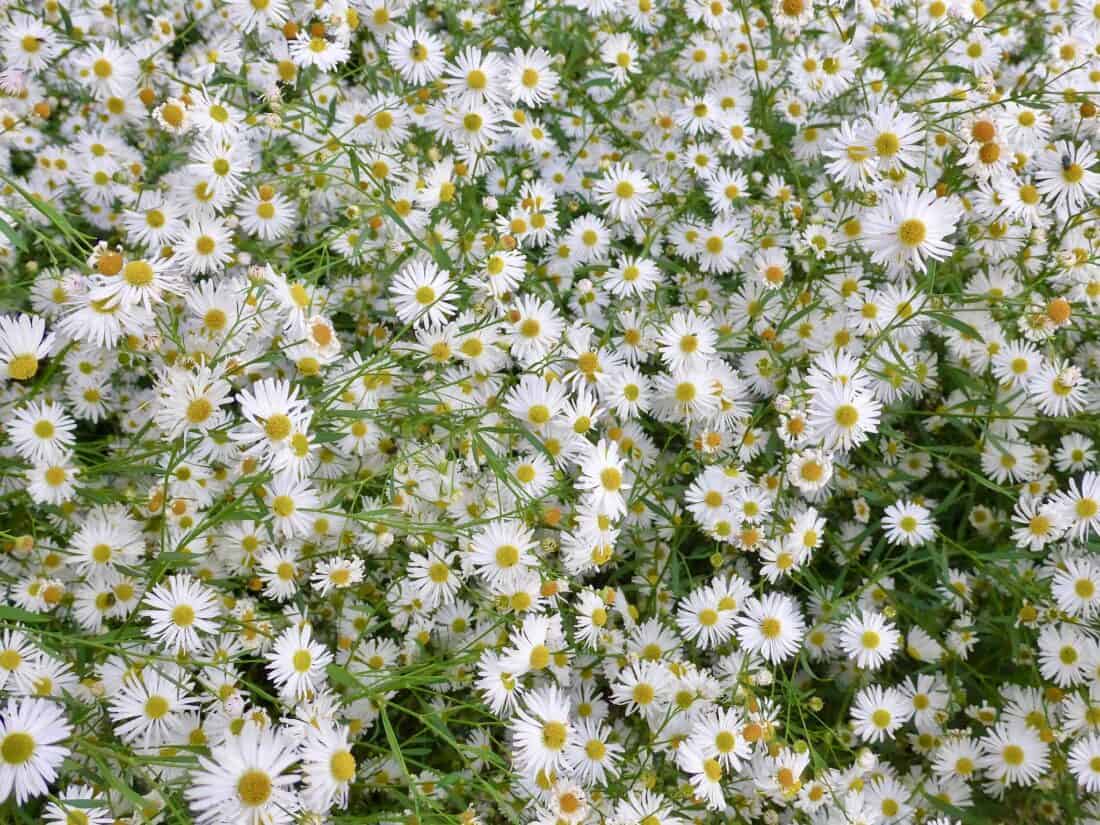
Aster ericoides ‘Snow Flurry’ is great for sunny and dry locations. Read our in-depth post about these great native groundcovers.
Astilbe chinensis ‘Pumila’ – Part sun to part shade. – Astilbe chinensis ‘Pumila’ is a compact perennial variety with feathery plumes of pinkish-purple flowers, ideal for adding elegance to shaded garden spaces.
Ceratostigma plumbaginoides is happiest in Sun to part shade. Ceratostigma plumbaginoides, commonly known as leadwort, is a low-growing perennial with brilliant blue flowers that adds a vibrant touch to any garden.
Euonymous fortunei ‘Wolong Ghost’ (euonymus fortunei wolong ghost) does not thrive in full sun – part sun is preferable. Euonymus fortunei ‘Wolong Ghost’ (also known as silver-veined wintercreeper) is a Dan Hinkley selection of evergreen groundcover. It is dense and eye-catching, featuring variegated foliage, with silver veins on dark green leaves.
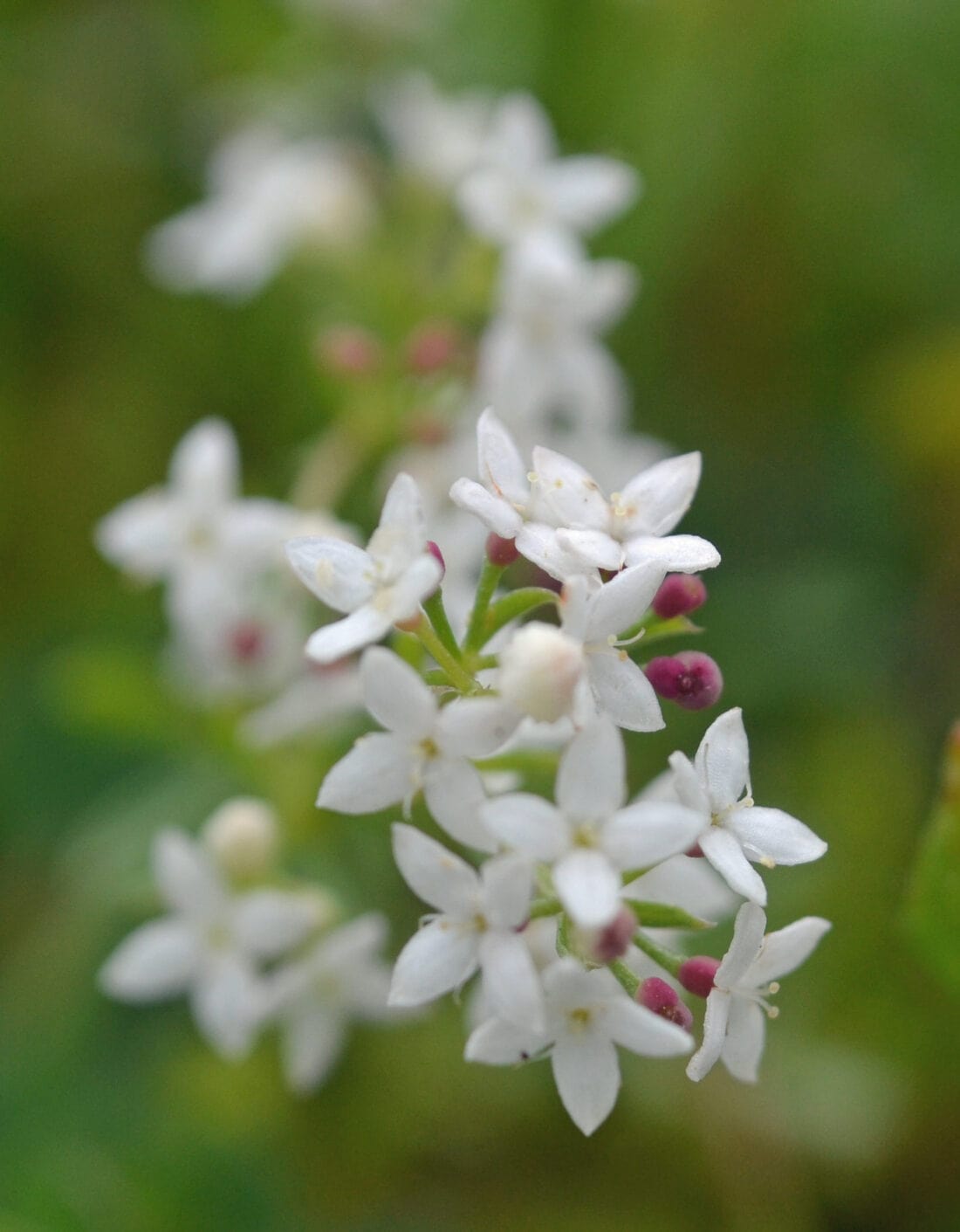
Gallium odoratum (sweet woodruff) – Prefers part sun to part shade. Galium odoratum, also known as sweet woodruff, is a fragrant, low-growing ground cover plant with delicate white flowers, and pretty fan-like leaves. It is perfect for adding a sweet, woodland charm to gardens. Though dainty in appearance, it is a vigorous and drought-tolerant plant, excellent when paired with Viola labradorica.
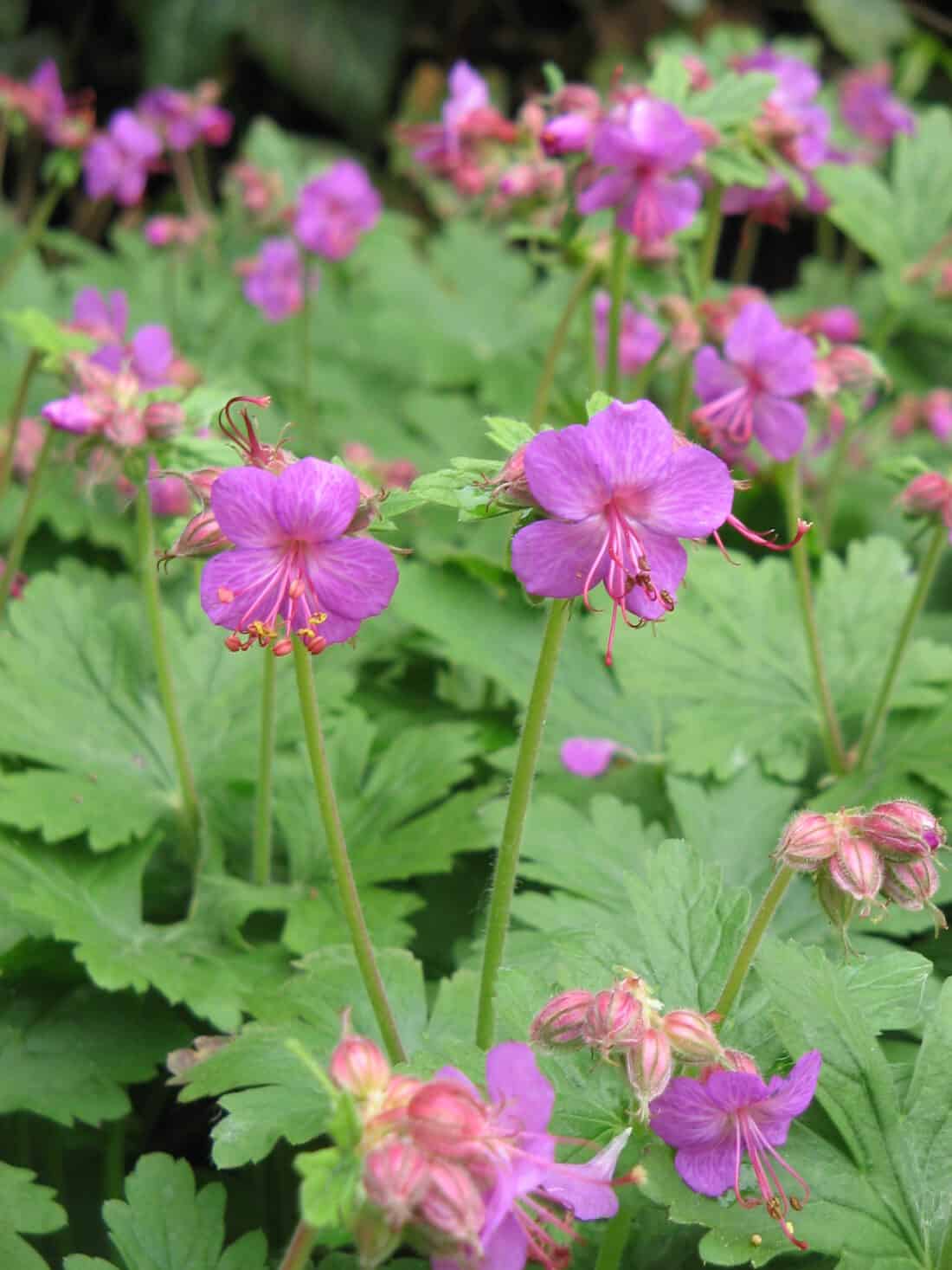
Geranium macrorrhizum (bigroot geranium) will take full sun or shade and is also tolerant of dry soils. It blooms with pink or white blossoms in May and June and features burgundy fall foliage color. The plant is also pleasantly fragrant. It even grows in clay soils under Norway Maples!
Iris cristata (dwarf crested iris)
Iris cristata is a mat-former, perfectly suited as a spreading blanket beneath ericaceous plants such as azaleas and rhododendrons. It is happy with dry shade.

Lamium maculatum ‘Purple Dragon’ and ‘Ghost’ – Lamium maculatum ‘Purple Dragon’ is a dynamic ground cover with vibrant purple foliage and striking silvery accents that bring a touch of drama to your garden, while ‘Ghost’ variety of Lamium maculatum offers a soft, silvery carpet of leaves that adds more of an ethereal charm. Both of these Lamium varieties thrive in low light conditions.
Maianthemum canadense (Canada mayflower) is a native wildflower ground over for dry shade. It happily grows under hemlocks and works well in woodlands. It has dainty, star-like white flowers and heart-shaped leaves.
Meehania cordata (Meehan’s mint) – Meehan’s mint prefers part shade (or shade) in moist, rich soils. It can tolerate dry sites in deep shade and full sun if there is sufficient soil moisture. It is native to the east coast of the United Stated from The Carolinas north to Pennsylvania.
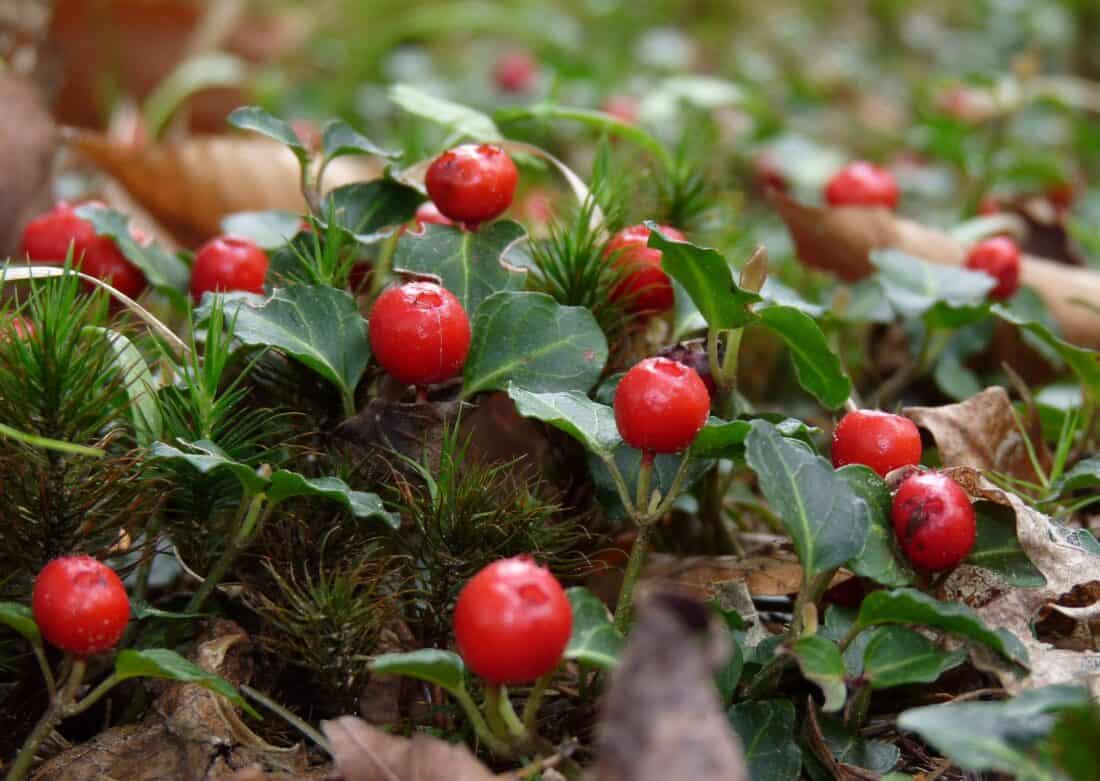
Mitchella repens (Partridgeberry) is a shade-loving and ground-hugging (only growing less than 2 inches tall) native evergreen vine. Partridgeberry prefers wet areas (like around streams or ponds) and features a red berry and small white flowers. It is reported that many gardeners have had great luck with growing it between pavers and over crushed concrete rubble.
Pachysandra procumbens (Allegheny spurge) is a shade-loving semi-evergreen perennial. Pachysandra procumbens spreads indefinitely by rhizomes and can form a dense carpet. It is native to woodlands in North Carolina to Kentucky and south to Florida and Texas.
Polygonatum humile (dwarf Solomon’s seal) is an easy-to-grow elegant shade plant. It carries elongated white dangling flowers on pencil-thin stems that are about 9′ tall. It likes moist soil but will tolerate thin soil and is a popular choice for rock gardens.
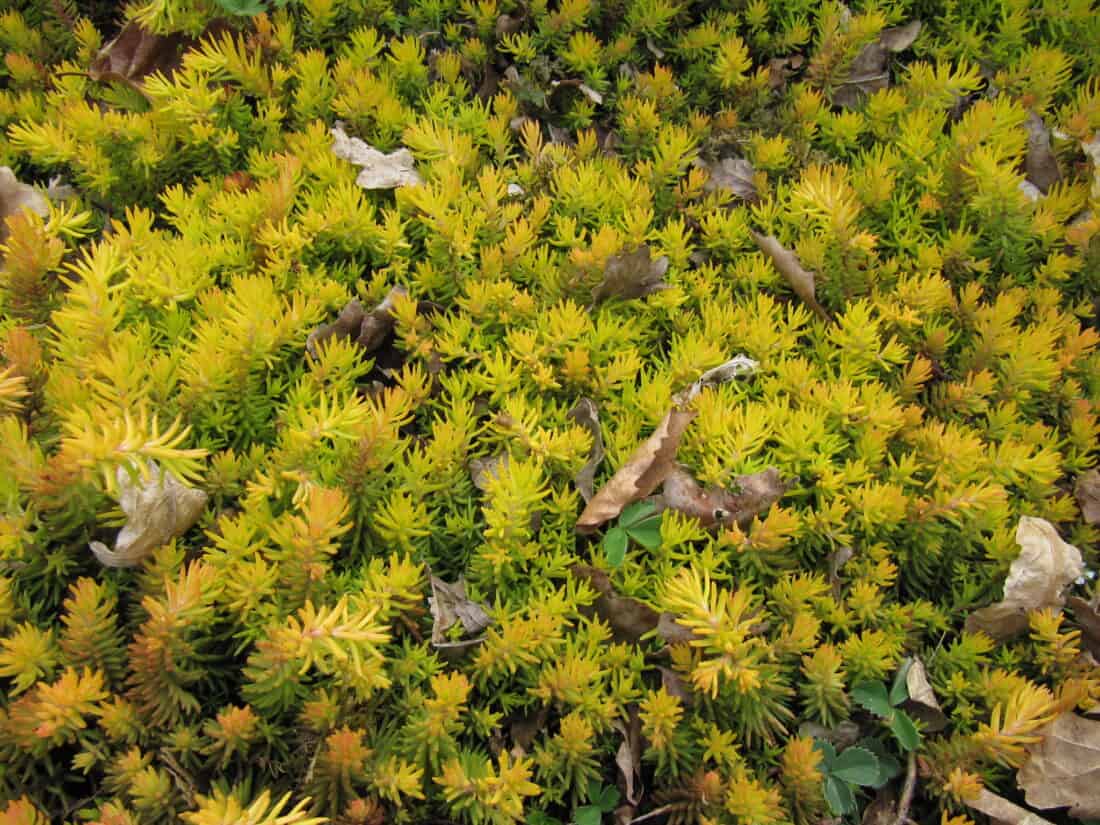
Sedum rupestre ‘Angelina’ is a fast-growing mat forming groundcover. It will grow 18-24 inches in a season and its succulent-like yellow foliage will brighten an already sunny dry area.
Tiarella cordifolia is a pretty and reliable groundcover for part sun to shade. I have it planted under and around boxwood shrubs, in woodlands and just about anywhere I need a tough plant I can rely on. The foliage is deeply lobed and attractive (reminding me of begonia leave with its markings) and the flower – called is a fuzzy white profusion that rises above the leaves. It is commonly called Foamflower. It creeps in a controlled way and makes lush mounds of evergreen leaves.
Vinca minor ‘Miss Jekyll’ – Vinca minor ‘Miss Jekyll’ is a charming evergreen ground cover, featuring glossy green leaves and periwinkle-blue flowers. It is a classic, low-maintenance carpet for part shade areas.
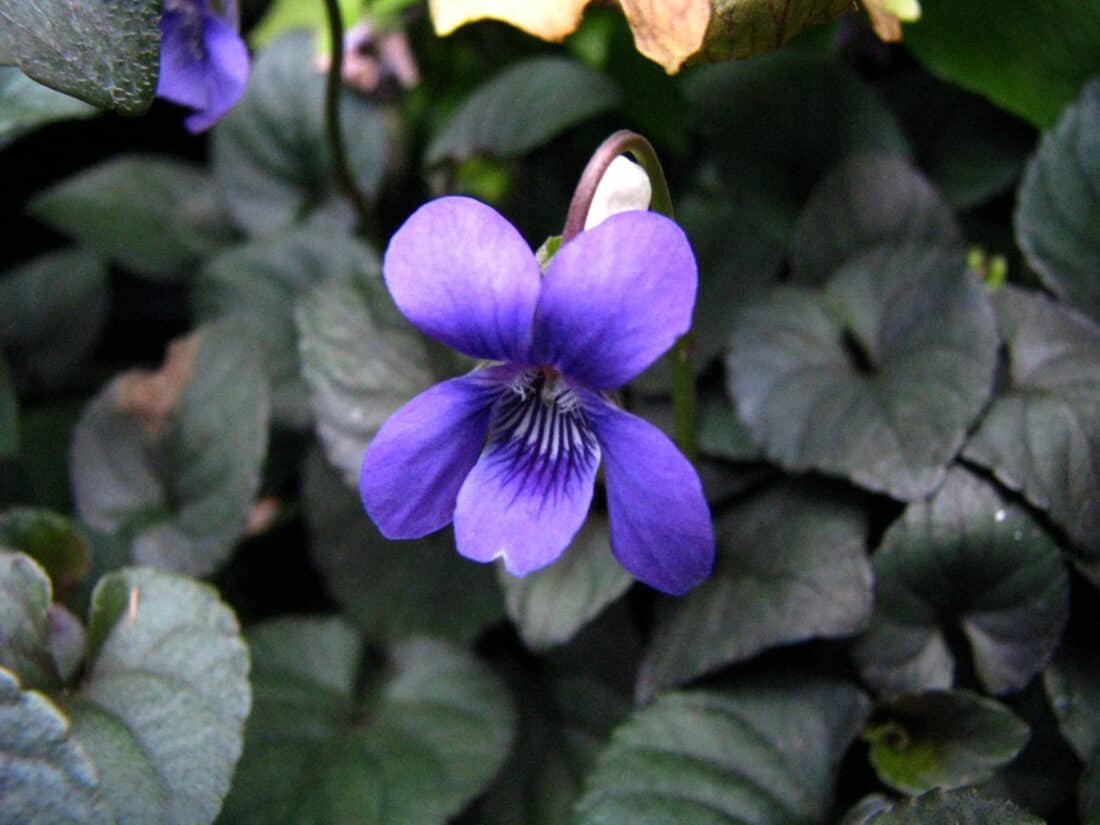
Viola labradorica is a native groundcover that is great in part shade. Viola labradorica spreads by stolons and self-seeding, it makes a great underplanting for variegated hosta.
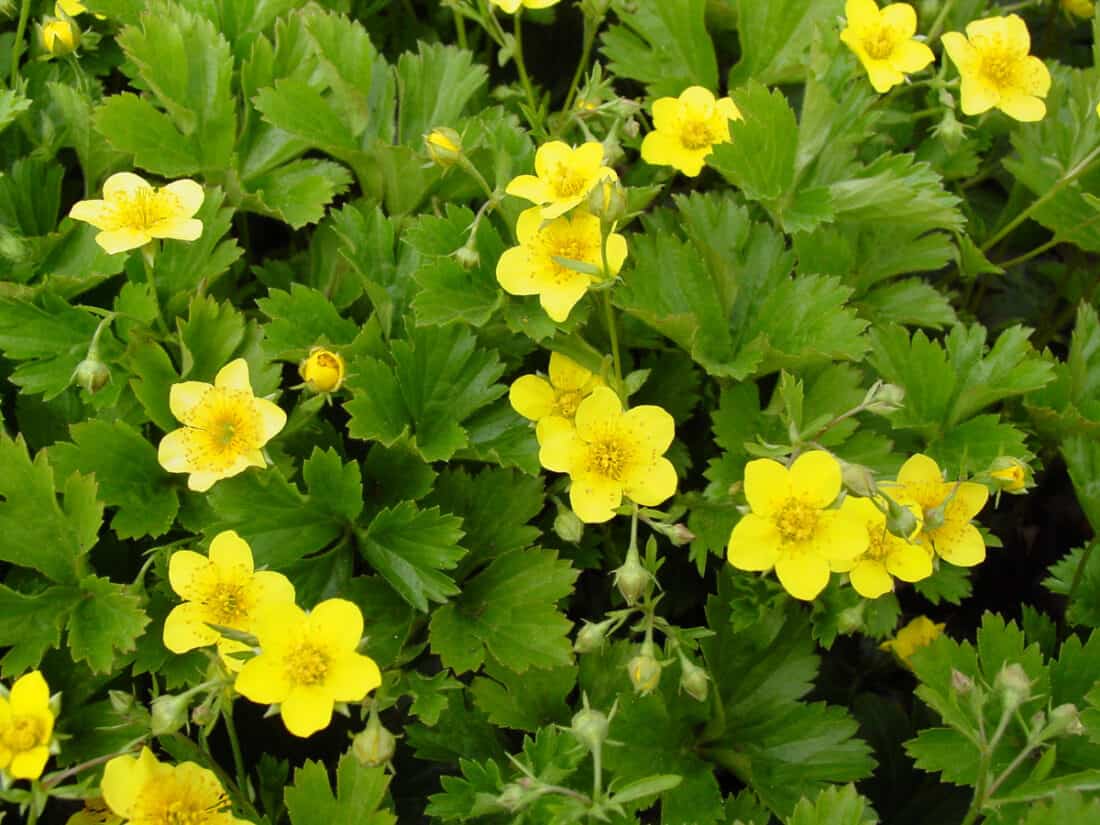
Waldsteinia ternata (barren strawberry) – Waldsteinia ternata is a fast growing semi-evergreen to 4”, studded by little yellow flowers in the spring. Combine it with spring-blooming bulbs like blue Hyacinthoides hispanica in part shade to sun.
Medium height Perennial ground cover plants – (Over 1’ tall)
Anemone canadensis (Canada anemone) SUN – WET (will fight it out with bishop’s weed!) (*)
Epimedium ‘Rubrum’ PART SUN – SHADE
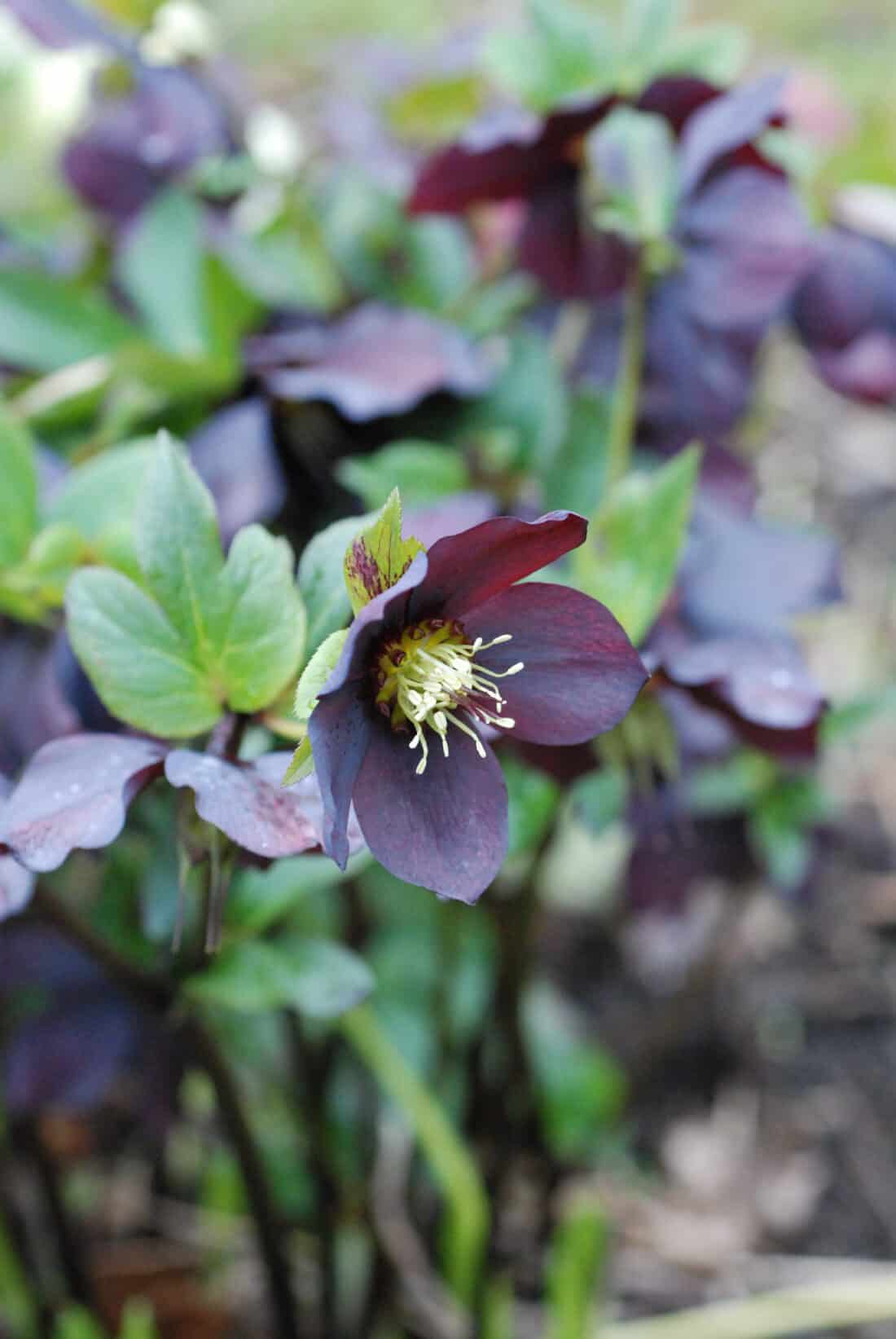
Hellebore hybrids PART SUN – SHADE (E)
Heuchera americana ‘Dale’s Strain’ PART SUN – SHADE (*)
Ferns Are a Great Groundcover
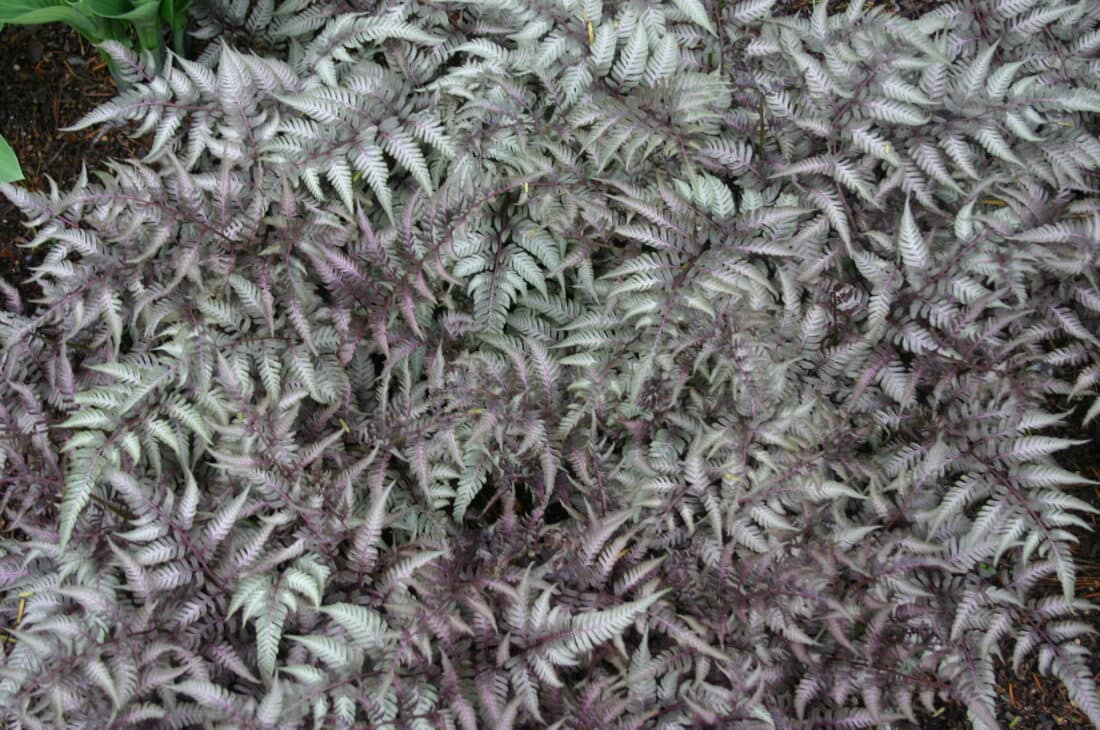
Athyrium niponicum pictum (Japanese painted fern) – Athyrium niponicum ‘Pictum’ – A slowly expanding kaleidescope of colors for shady spots, especially nice as a “quilt” with Ajuga reptans ‘Chocolate Chip” and Iris cristata. PART SHADE – SHADE
Dennistaedtia punctiloba (hayscented fern) PART SUN -SHADE – DRY (*)
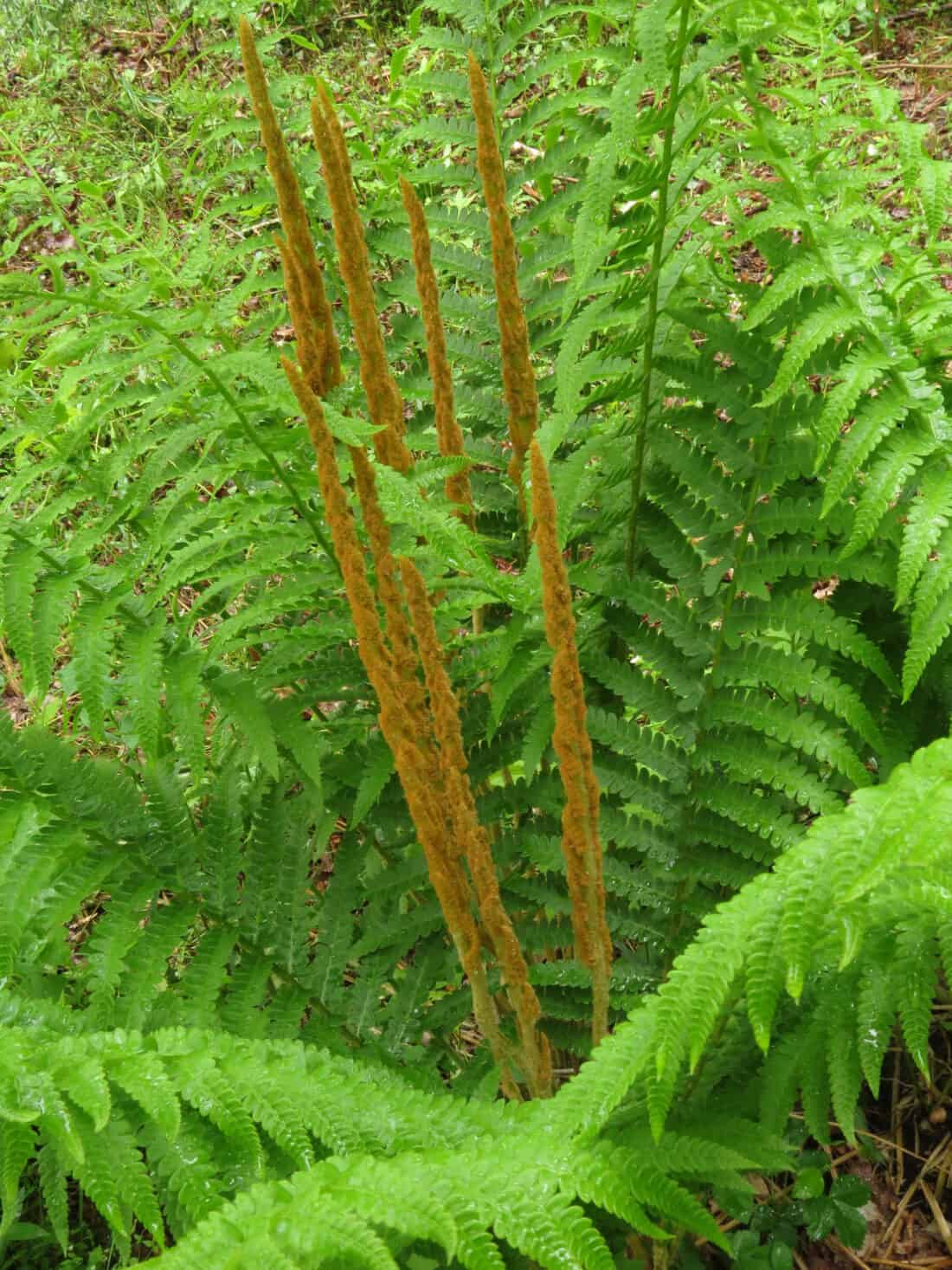
Osmundastrum cinnamomeum (cinnamon fern) SUN – SHADE – WET (*)
Groundcover Grasses
Carex pennsylvanica (Pennsylvania sedge) –
Carex pennsylvanica – Graceful fine-textured shade grass for larger, naturalized areas. Easy to grow and happiest in the company of oaks. SHADE – DRY (*)
Carex ‘Blue Zinger’ PART SHADE – SHADE – WET (*)
Hakonechloa macra ‘Aureola’, ‘All Gold’ PART SUN – PART SHADE
Luzula sylvatica ‘Marginata’ and ‘Aurea’ a/k/a ‘Hohe Tatra’ PART SHADE – SHADE – DRY
Spreading woody shrubs as groundcover plants
Itea virginica ‘Little Henry’ (Virginia sweetspire)
SUN – SHADE – WET or DRY (*)
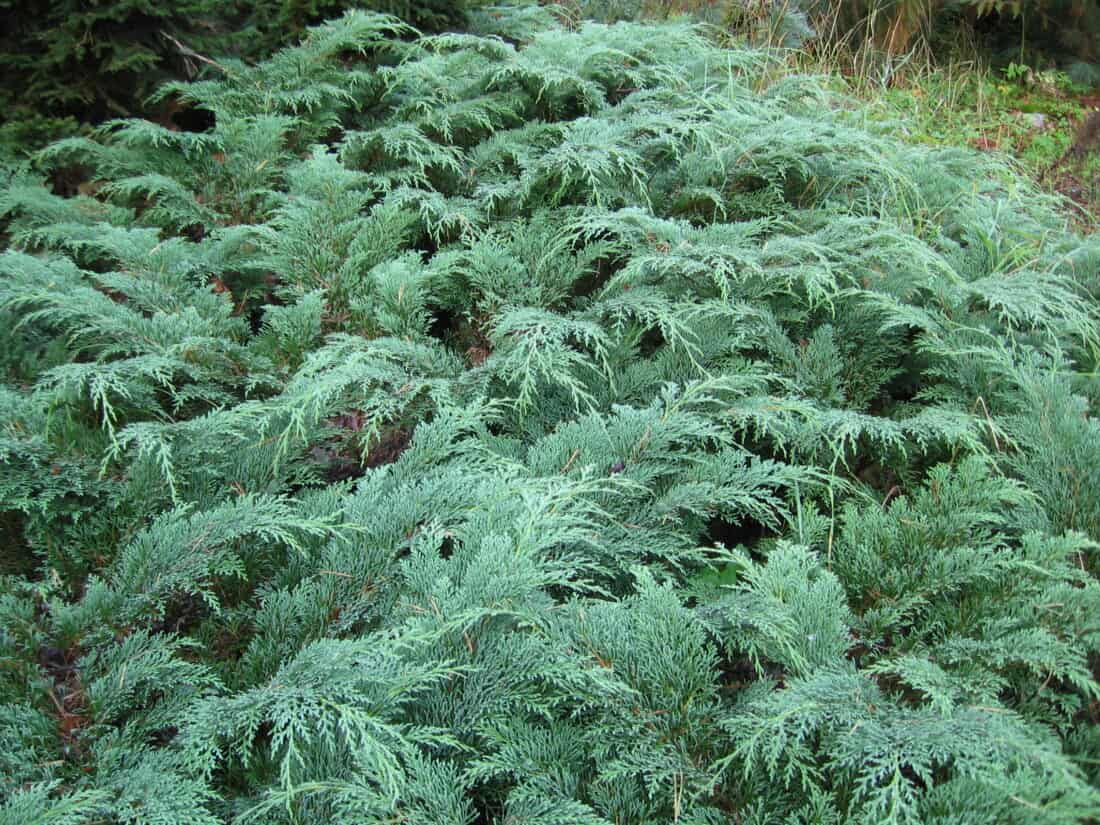
Microbiota decussata – Also called Siberian cypress or Russian arborvitae, this confier will turn a rich “brown” in winter. For a lovely winter effect massed on a hillside or under red twig dogwoods. These are tough plants but they do demand excellent drainage.
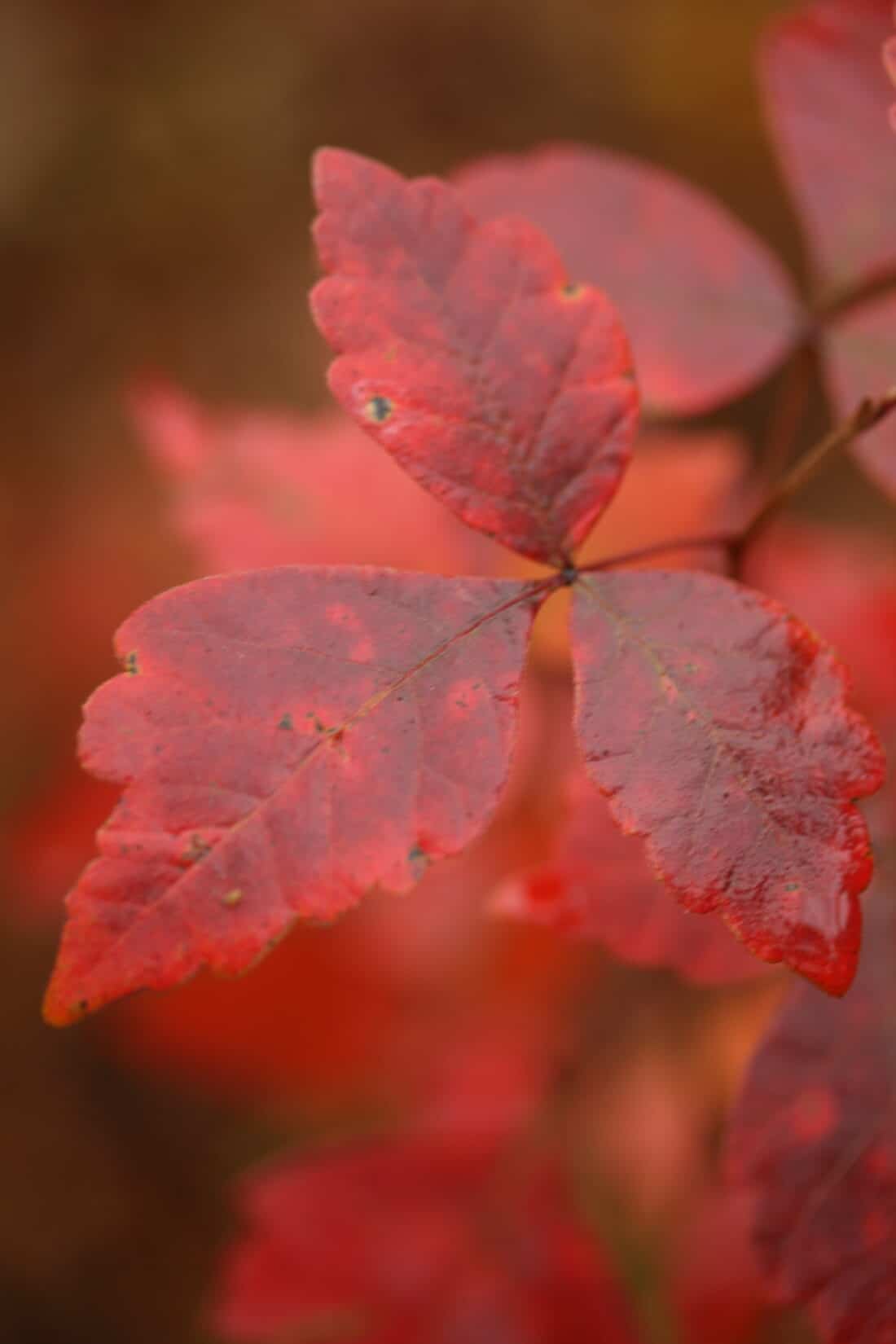
Rhus aromatica ‘Grow-Lo’ – Plant in dry and partially shady conditions. It is drought and deer-resistant with an amazing red fall color. It is a vigorous grower for large areas and perfect for holding soil on hillsides.
Vaccinium angustifolium (lowbush blueberry) SUN – SHADE – WET (*)
written by Joanne Neale
Link you provide that are use-full.Covers is really nice.Your web site offered us with useful information to work on.